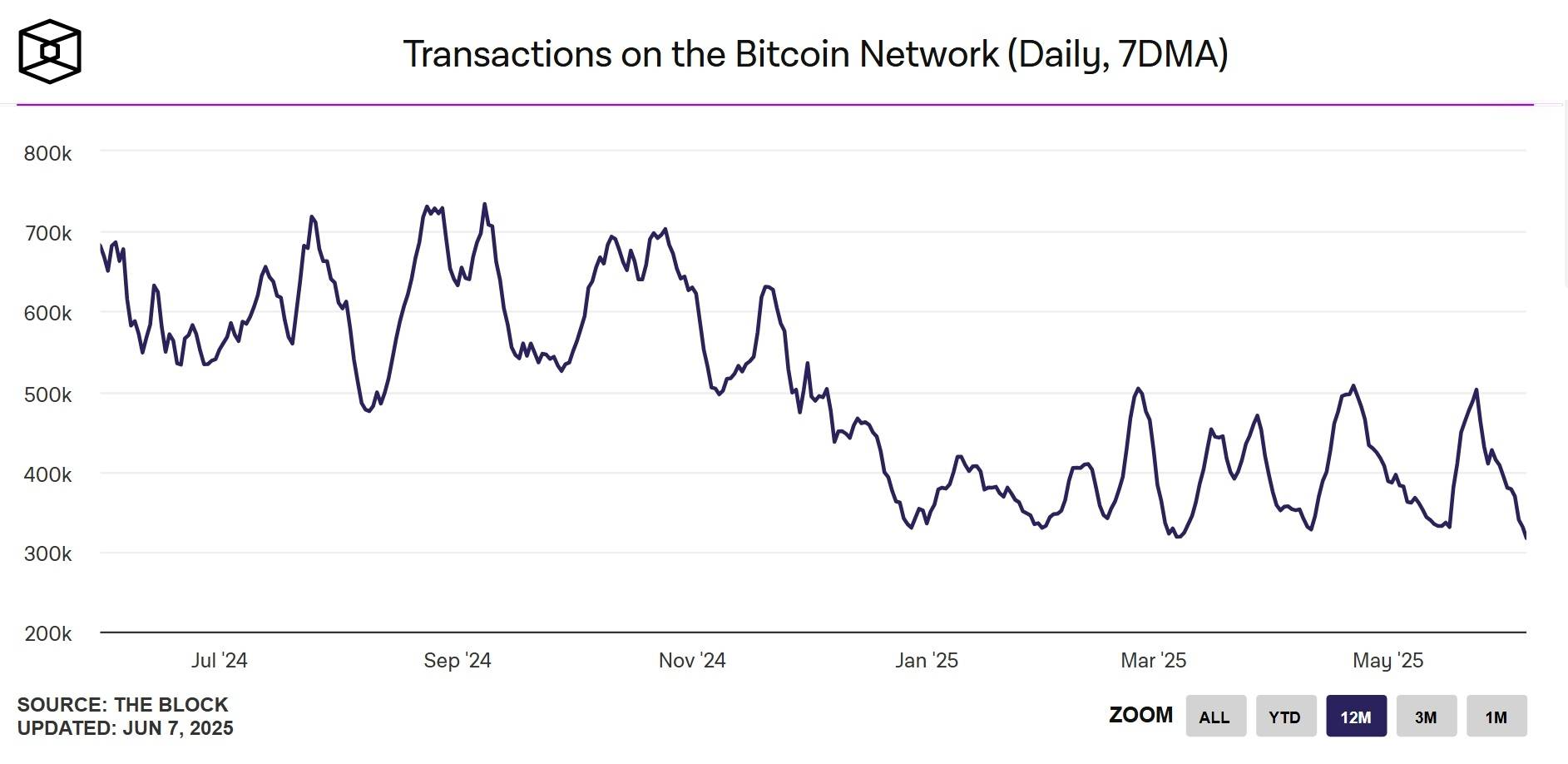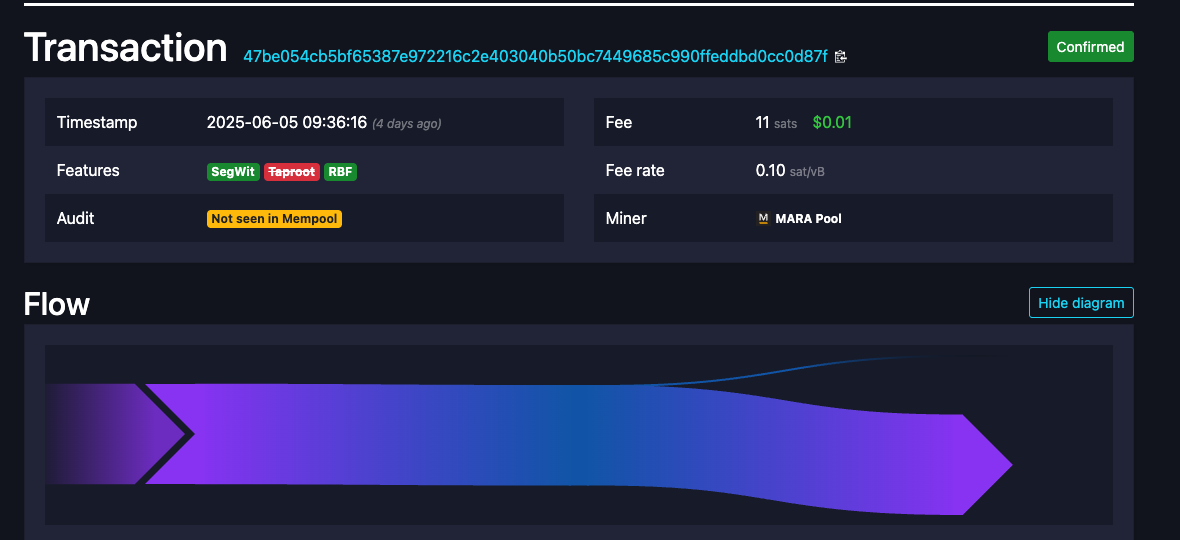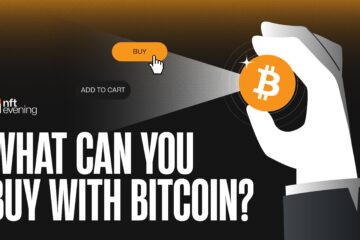According to memepool space, key indicators including the number of active addresses and daily transactions have fallen sharply, suggesting waning user engagement and possibly a temporary retreat in market confidence.
Recent Glassnode data indicates that the number of active Bitcoin addresses has dropped to just 566,000 per day, a level not seen since the bear market of late 2023. Similarly, the number of daily transactions has slipped below 275,000—a figure that reflects a near-30% decline from the monthly average in April 2025.
Ordinals and Inscriptions Cool Off
Part of the decline in network activity is attributed to the fading hype around Bitcoin Ordinals and inscriptions. These NFT-like digital artifacts, once a major source of congestion and gas fee spikes on the Bitcoin blockchain, have seen diminished interest in recent months.
Dune Analytics data shows that the number of daily Ordinals inscriptions has plummeted to under 3,000, compared to highs of over 400,000 in late 2023 and early 2024. This trend has not only eased pressure on transaction fees but also reflects a broader cooling in speculative behavior.
Bitcoin miners are among the hardest hit by the decline in network activity. As transaction volumes drop and fees fall, mining revenue—particularly from fees rather than block rewards—has also taken a hit. Fee-based income now accounts for less than 2% of total miner revenue, down significantly from the 10–15% levels seen during the inscription boom.


Source: The Block
According to Blockchain.com, daily miner revenue has slipped below $30 million, putting pressure on smaller mining operations and potentially accelerating industry consolidation.
Market Interpretation and Outlook
Analysts suggest that the current slowdown may not be entirely bearish. Some view it as a phase of market consolidation, where speculative excesses are flushed out before a healthier growth cycle resumes. Others note that despite the drop in activity, Bitcoin’s core fundamentals remain intact, with hash rate still hovering near all-time highs and institutional interest—albeit subdued—remaining steady.
Still, the short-term outlook remains cautious. The decline in transaction volumes, user activity, and fee incentives presents challenges for network sustainability, especially as the next Bitcoin halving in 2028 draws closer.
The latest data underscores a crucial inflection point for Bitcoin. While long-term holders and institutions may stay the course, the retail market appears to be in retreat—at least for now. Whether this period marks a brief lull or the beginning of a deeper structural shift in Bitcoin’s usage patterns will likely depend on broader macroeconomic developments and evolving user narratives.
Read more: Bitcoin Crushes Wall Street: Second Only to NVIDIA in a Decade of Gains
 Bitcoin
Bitcoin  Ethereum
Ethereum  Tether
Tether  XRP
XRP  Solana
Solana  USDC
USDC  Lido Staked Ether
Lido Staked Ether  TRON
TRON  Dogecoin
Dogecoin  Cardano
Cardano  Wrapped stETH
Wrapped stETH  Figure Heloc
Figure Heloc  Wrapped Bitcoin
Wrapped Bitcoin  WhiteBIT Coin
WhiteBIT Coin  Chainlink
Chainlink  Hyperliquid
Hyperliquid  Bitcoin Cash
Bitcoin Cash  Zcash
Zcash  Stellar
Stellar  Wrapped eETH
Wrapped eETH  USDS
USDS  Binance Bridged USDT (BNB Smart Chain)
Binance Bridged USDT (BNB Smart Chain)  LEO Token
LEO Token  Ethena USDe
Ethena USDe  Hedera
Hedera  Litecoin
Litecoin  Sui
Sui  Coinbase Wrapped BTC
Coinbase Wrapped BTC  Avalanche
Avalanche  WETH
WETH  Monero
Monero  Shiba Inu
Shiba Inu  Polkadot
Polkadot  Toncoin
Toncoin  Canton Network
Canton Network  Cronos
Cronos  Ethena Staked USDe
Ethena Staked USDe  Dai
Dai  World Liberty Financial
World Liberty Financial  Mantle
Mantle  Uniswap
Uniswap  MemeCore
MemeCore  sUSDS
sUSDS  Internet Computer
Internet Computer  Bittensor
Bittensor  NEAR Protocol
NEAR Protocol  USDT0
USDT0  Aave
Aave 



